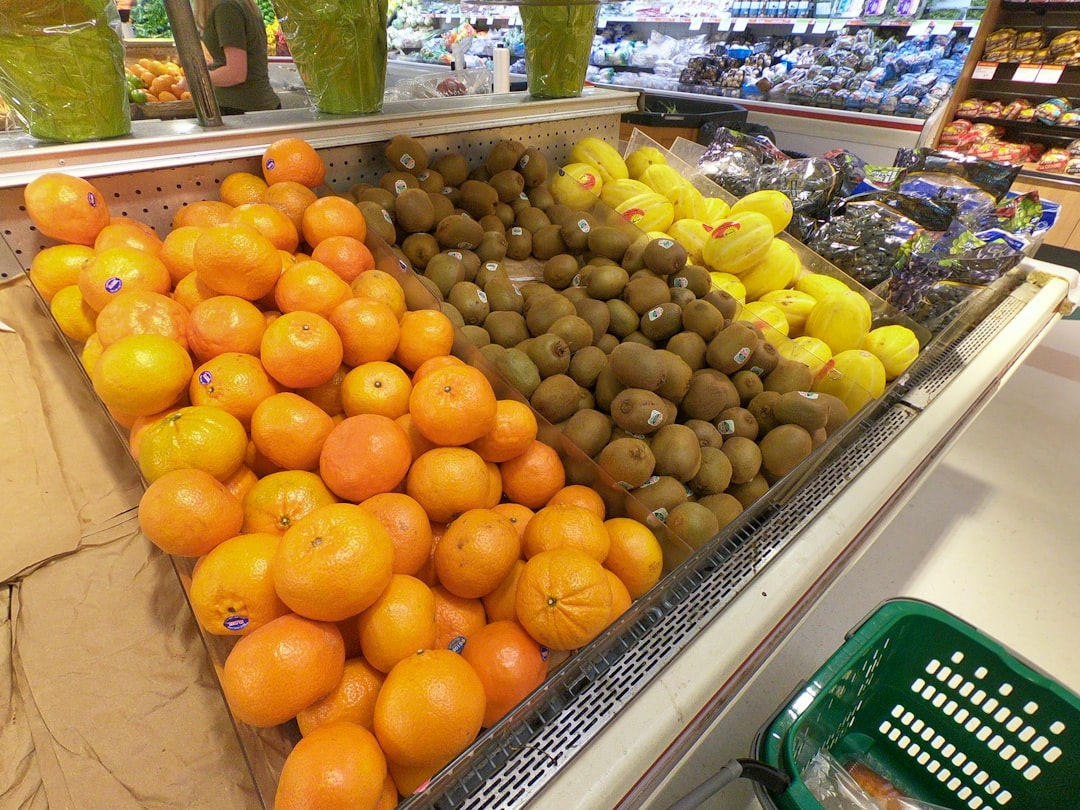In the rapidly evolving landscape of retail, grocery shopping has undergone a significant transformation, largely driven by the advent of technology. You may have noticed that your shopping experience is no longer just about picking items off the shelves; it’s increasingly influenced by sophisticated grocery algorithms. These algorithms are designed to analyze vast amounts of data, helping retailers understand consumer behavior and preferences.
As you navigate through aisles or scroll through online grocery platforms, these algorithms work behind the scenes to tailor your shopping experience, making it more efficient and personalized. The integration of grocery algorithms into your shopping routine is not merely a trend; it represents a fundamental shift in how retailers engage with you. By leveraging data analytics and machine learning, grocery stores can predict what you might need before you even realize it.
This not only enhances your shopping experience but also streamlines inventory management for retailers. As you delve deeper into the world of grocery algorithms, you’ll discover how they shape your choices and influence your purchasing decisions, ultimately redefining the way you shop for groceries.
Key Takeaways
- Grocery algorithms are revolutionizing the way we shop for food and household items.
- Personalization in grocery shopping is about tailoring recommendations and offers to individual preferences and needs.
- Grocery algorithms use your purchase history to understand your preferences and make personalized recommendations.
- Machine learning plays a crucial role in grocery algorithms by analyzing data and predicting consumer behavior.
- Personalized recommendations can greatly enhance the shopping experience by saving time and offering relevant products.
Understanding Personalization in Grocery Shopping
Personalization in grocery shopping is all about creating a tailored experience that resonates with your individual preferences and needs. When you walk into a store or log onto an online grocery platform, the goal is to make your shopping journey as seamless and enjoyable as possible. You might have noticed that certain products are recommended to you based on your previous purchases or browsing history.
This is the essence of personalization—using data to create a unique shopping experience that caters specifically to you. The concept of personalization extends beyond mere recommendations; it encompasses various aspects of your shopping experience. For instance, you may receive targeted promotions or discounts on items you frequently buy, making it easier for you to save money while shopping.
Additionally, personalized shopping lists can be generated based on your dietary preferences or past purchases, allowing you to quickly find what you need without sifting through countless options. This level of customization not only enhances your convenience but also fosters a sense of loyalty towards the retailer, as you feel understood and valued as a customer.
How Grocery Algorithms Use Your Purchase History

Your purchase history serves as a treasure trove of information for grocery algorithms, providing insights into your buying habits and preferences. Every time you make a purchase, whether in-store or online, data is collected and analyzed to create a comprehensive profile of your shopping behavior. This information allows algorithms to identify patterns and trends that can be used to predict what you might want to buy in the future.
For instance, if you consistently purchase organic products, the algorithm will likely prioritize similar items in your recommendations. Moreover, grocery algorithms can also identify seasonal trends in your purchasing behavior. You may find that during the summer months, your shopping list includes more fresh fruits and barbecue supplies, while winter might see an uptick in comfort foods and baking ingredients.
By analyzing this data, algorithms can help retailers stock their shelves accordingly, ensuring that the products you want are readily available when you need them. This not only enhances your shopping experience but also contributes to more efficient inventory management for the retailer.
The Role of Machine Learning in Grocery Algorithms
| Metrics | Data |
|---|---|
| Customer Segmentation | Demographic data, purchase history |
| Inventory Management | Sales data, supplier information |
| Demand Forecasting | Historical sales data, seasonal trends |
| Pricing Optimization | Competitor pricing, customer behavior |
| Recommendation Systems | Customer preferences, purchase history |
Machine learning plays a pivotal role in enhancing the effectiveness of grocery algorithms. By employing advanced statistical techniques and computational models, machine learning enables these algorithms to learn from data over time, improving their accuracy and relevance. As you continue to shop, the algorithms adapt and refine their recommendations based on new information, ensuring that they remain aligned with your evolving preferences.
One of the most significant advantages of machine learning in grocery algorithms is its ability to process vast amounts of data quickly and efficiently. This means that as more consumers engage with the platform, the algorithms become increasingly adept at predicting trends and preferences. For example, if a new health trend emerges—such as plant-based diets—the algorithm can quickly analyze consumer responses and adjust its recommendations accordingly.
This dynamic adaptability ensures that your shopping experience remains fresh and relevant, catering to both current trends and your personal tastes.
The Impact of Personalized Recommendations on Your Shopping Experience
Personalized recommendations have a profound impact on your overall shopping experience. When grocery algorithms suggest items based on your preferences, it not only saves you time but also enhances your satisfaction as a shopper. You may find yourself discovering new products that align with your tastes or dietary needs, which can lead to a more enjoyable and fulfilling shopping experience.
Instead of feeling overwhelmed by countless options, personalized recommendations streamline the decision-making process. Additionally, these tailored suggestions can foster a sense of connection between you and the retailer. When you receive recommendations that resonate with your lifestyle—such as gluten-free options or vegan alternatives—it signals that the retailer understands your needs and values your patronage.
This connection can lead to increased brand loyalty, as you are more likely to return to a store that consistently meets your expectations and preferences. Ultimately, personalized recommendations transform grocery shopping from a mundane task into an engaging experience that feels uniquely catered to you.
The Use of Data Analytics in Grocery Algorithms

Data analytics is at the heart of grocery algorithms, enabling retailers to make informed decisions based on consumer behavior and market trends. By collecting and analyzing data from various sources—such as sales records, customer feedback, and online interactions—retailers can gain valuable insights into what products are popular among shoppers like you. This information allows them to optimize their inventory and marketing strategies effectively.
For instance, if data analytics reveals that a particular brand of organic cereal is consistently flying off the shelves, retailers can adjust their stock levels accordingly to meet demand. Additionally, they can use this data to identify emerging trends or shifts in consumer preferences, allowing them to stay ahead of the competition. As a shopper, this means that you are more likely to find the products you love readily available while also being introduced to new items that align with current market trends.
The Ethical Considerations of Personalized Grocery Algorithms
While personalized grocery algorithms offer numerous benefits, they also raise important ethical considerations that warrant attention. One major concern revolves around data privacy; as these algorithms rely heavily on consumer data to function effectively, there is an inherent risk associated with how this information is collected, stored, and used. You may wonder how much of your personal information is being tracked and whether it could be misused or compromised.
Another ethical consideration involves the potential for manipulation in marketing practices. With personalized recommendations tailored specifically for you, there is a fine line between providing value and exploiting consumer behavior for profit. Retailers must navigate this delicate balance carefully to ensure that their practices remain transparent and respectful of consumer autonomy.
As a shopper, it’s essential to be aware of these ethical implications and advocate for responsible data usage while enjoying the benefits of personalized grocery algorithms.
The Future of Personalization in Grocery Shopping
The future of personalization in grocery shopping looks promising as technology continues to advance at an unprecedented pace. You can expect even more sophisticated algorithms that leverage artificial intelligence (AI) and big data analytics to create hyper-personalized experiences tailored specifically for you. Imagine walking into a store where your shopping list is automatically generated based on your preferences or receiving real-time notifications about discounts on items you frequently purchase.
Moreover, advancements in technology may lead to greater integration between online and offline shopping experiences. For instance, augmented reality (AR) could allow you to visualize how certain products fit into your lifestyle before making a purchase decision. As retailers invest in innovative solutions to enhance personalization further, your grocery shopping experience will likely become more intuitive and enjoyable than ever before.
The Benefits of Personalized Grocery Algorithms for Consumers
Personalized grocery algorithms offer numerous benefits that enhance your overall shopping experience. One of the most significant advantages is convenience; by receiving tailored recommendations based on your preferences, you can save time while shopping—whether online or in-store. Instead of wandering through aisles or scrolling through endless product listings, personalized suggestions help streamline your decision-making process.
Additionally, these algorithms often lead to cost savings through targeted promotions and discounts on items you regularly purchase. You may find yourself taking advantage of special offers that align with your buying habits, ultimately reducing your overall grocery expenses. Furthermore, personalized recommendations can introduce you to new products that align with your dietary needs or lifestyle choices—expanding your culinary horizons while ensuring that you have access to items that resonate with your tastes.
The Challenges of Implementing Personalization in Grocery Algorithms
Despite the many advantages of personalized grocery algorithms, implementing them effectively poses several challenges for retailers.
Retailers must invest in robust data collection methods and analytics tools to ensure they are working with accurate information.
Another challenge lies in striking the right balance between personalization and privacy concerns. As consumers become increasingly aware of how their data is being used, retailers must navigate this landscape carefully to maintain trust while still delivering personalized experiences. Transparency regarding data usage policies and providing consumers with control over their information will be crucial in overcoming this challenge.
Tips for Making the Most of Personalized Grocery Algorithms
To maximize the benefits of personalized grocery algorithms during your shopping experience, consider a few practical tips. First and foremost, take advantage of loyalty programs offered by retailers; these programs often provide access to exclusive discounts and promotions tailored specifically for you based on your purchasing history. By signing up for these programs, you can enhance your savings while enjoying a more personalized shopping experience.
Additionally, don’t hesitate to provide feedback on product recommendations or promotions you receive; this input helps retailers refine their algorithms further and ensures that future suggestions align more closely with your preferences. Lastly, stay informed about privacy policies related to data usage; understanding how your information is being utilized will empower you as a consumer while allowing you to enjoy the benefits of personalized grocery algorithms confidently. In conclusion, personalized grocery algorithms have revolutionized the way you shop for groceries by leveraging data analytics and machine learning to create tailored experiences that cater specifically to your needs and preferences.
While there are ethical considerations surrounding data privacy and manipulation in marketing practices, the benefits—such as convenience, cost savings, and enhanced satisfaction—are undeniable. As technology continues to advance, the future holds exciting possibilities for even greater personalization in grocery shopping, making it an engaging experience that resonates with consumers like you.
Grocery algorithms have become an integral part of modern shopping experiences, optimizing everything from inventory management to personalized recommendations. These algorithms analyze vast amounts of data to predict consumer behavior, manage stock levels, and even adjust prices dynamically.
